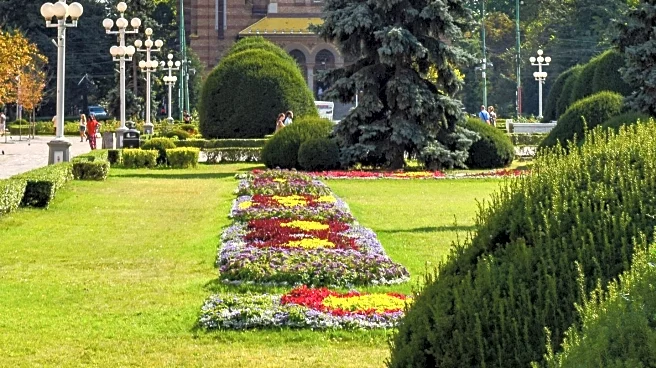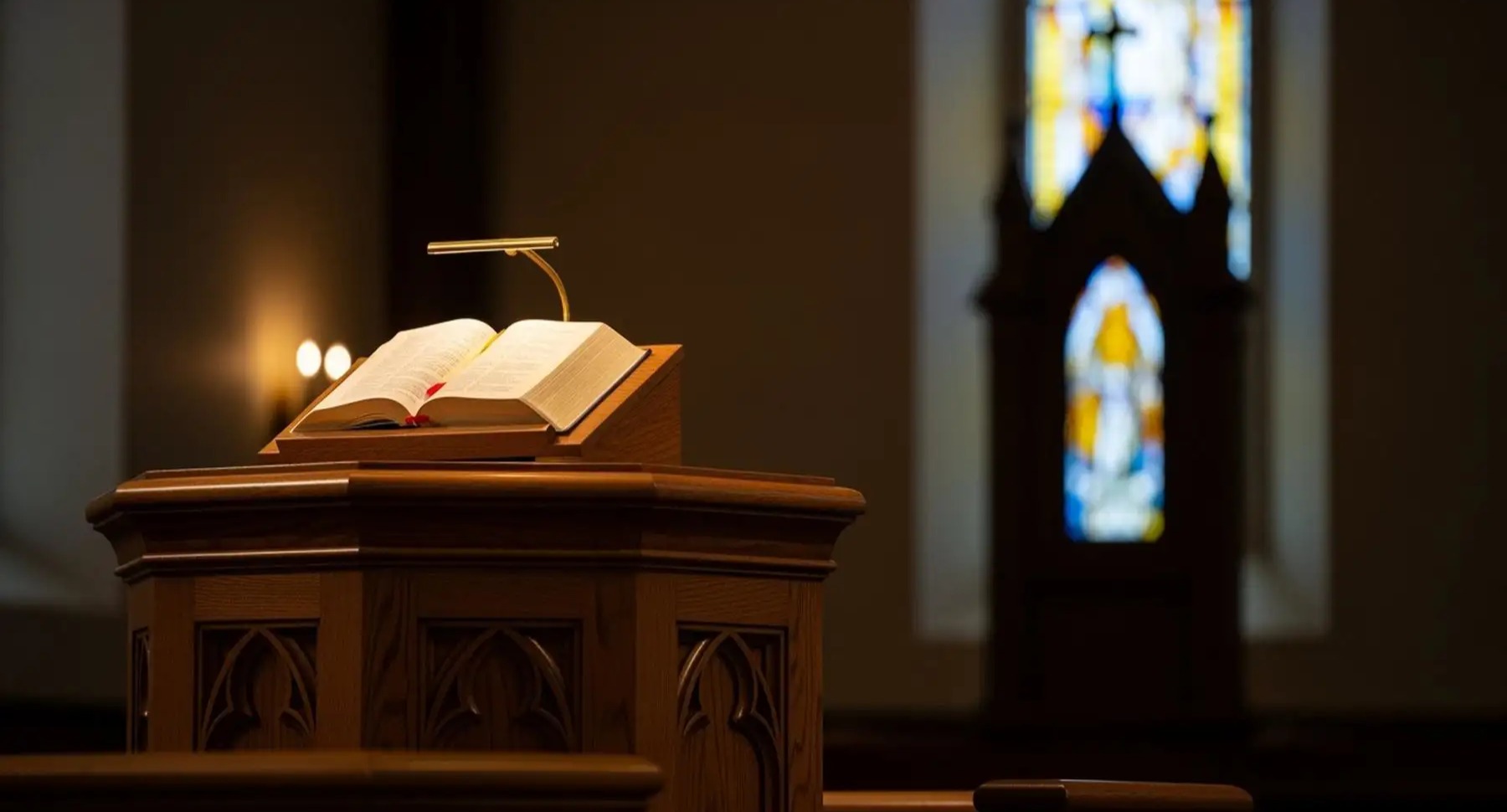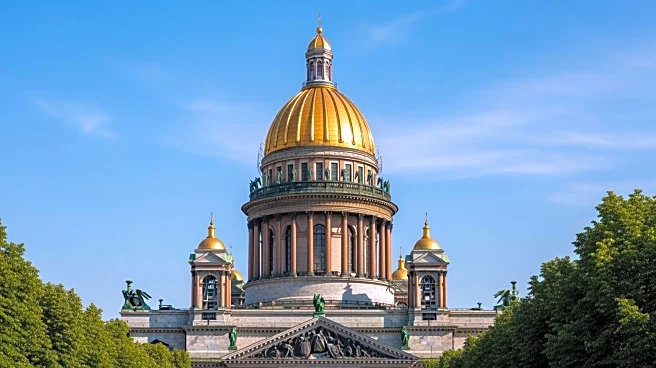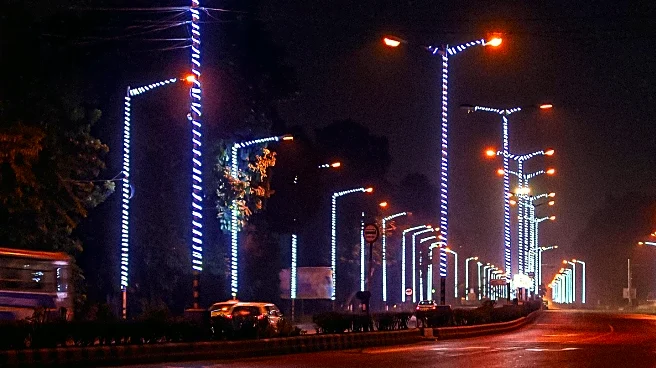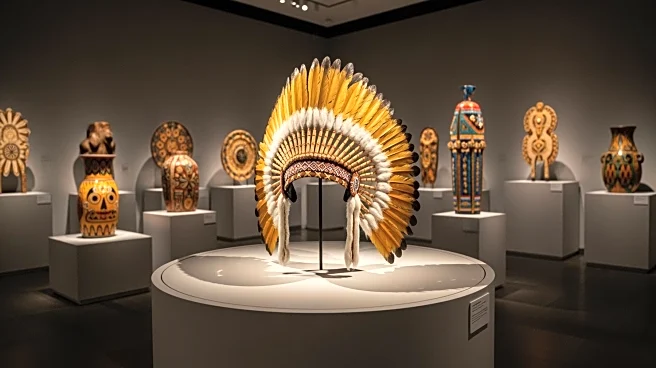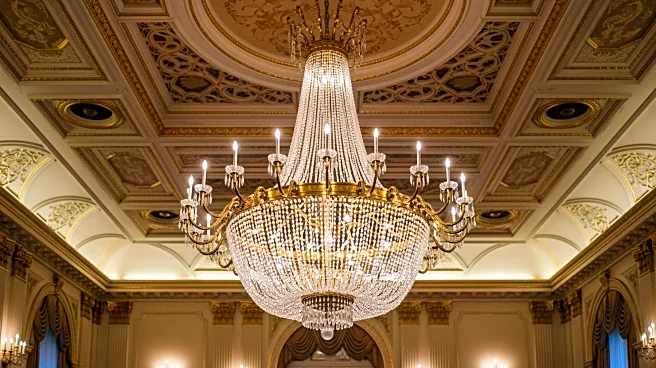What's Happening?
In Bucharest, Romania, thousands gathered for the consecration of the People's Salvation Cathedral, now the world's largest Christian Orthodox church. The cathedral, which stands over 125 meters tall and can
accommodate 5,000 worshippers, has been under construction for 15 years. Its interior is adorned with frescoes and mosaics inspired by medieval Romanian and Byzantine art. The project, costing approximately 270 million euros, has been funded largely by public money, sparking debate over its necessity and the allocation of resources in a country with significant budget deficits.
Why It's Important?
The completion of the cathedral is a significant cultural and religious milestone for Romania, a country where 85% of the population identifies as religious. It symbolizes national identity and pride, potentially boosting tourism and serving as a cultural landmark. However, the use of public funds for its construction has been controversial, with critics arguing that the money could have been better spent on essential services like healthcare and education. This debate highlights broader issues of governance and resource allocation in Romania.
Beyond the Headlines
The cathedral's construction reflects the complex interplay between religion, politics, and national identity in Romania. While it may enhance national pride, it also raises questions about the role of religion in public life and the prioritization of public spending. The project could influence future policy decisions regarding the funding of religious and cultural projects, as well as Romania's approach to balancing tradition with modern societal needs.
